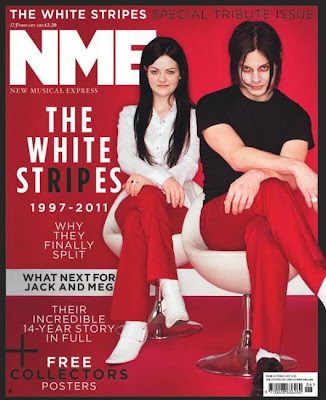The creation of the product has allowed me to significantly develop my media skills, not only in terms of design but also in terms of image manipulation.
Any images utilised within the magazine were taken with a Nikon
SLR camera; I was particularly grateful for the professional quality of images that such acamera could offer, and learnt how to enhance my photography skills from the task.
Initially, I manipulated images utilising Adobe Photoshop. With no prior experience of this software, it was necessary for me to learn the skills required in order to be able to alter chosen images to a satisfactory standard. After some experimentation, I was able to gain the necessary understanding of Photoshop and manipulate the images. It was also important to consider representations upon editing the images; the images must reflect what I intended to convey with the creation of the product. Thus, any selected images needed to be representative of the individualistic 'indie goth' image of the product.
Photoshop is an indispensable tool when creating a product such as a magazine, allowing images to be transformed from imperfect to stylistically pleasing. This is exemplified in the before and after images below, the latter being utilised within the double page spread of my magazine.
Moreover, all images were manipulated in a different manner in order to achieve a variety of effects. For example, the image featured on the first page of the double page spread was originally a generic black and image; I then learnt how to cut the figure from the background and alter the image to achieve an artistic feel which reflects and enhances the creative nature of the magazine itself (above). The two images featured on the second page of the double page spread were edited with the conscious intention of appeari
ng grungy and naturalistic in order to reflect the realm of indie music and the approachability which contrasts the cover star's beguiling stage persona. A drop shadow effect was thenadded to ensure that the images were striking, despite being less predominant and possessing a far more delicate feel than that of the facing page.
In order to achieve the striking appearance for the contents page, I selected an image taken at a musical event. The main feature of the image was that it correlated with the minimalist yet distinct aesthetic of the magazine. However, the image was in colour. I decided that in order to further the mysterious, powerful representation of the musician, the image should be black and white and the contrast edited in order to gain a darker, mystical feel; as is visible below with the completed page. The simplistic nature of the page allows the image to stand as the main focal point.
The cover image was manipulated in a manner which would enhance the striking colours and my intention was to achieve an ethereal, otherworldly aesthetic with the image, which is reflective of the artist and her music as well as the direction in which I wanted to steer the magazine.
To create the magazine, Adobe InDesign was utilised. Primarily, I found it somewhat difficult to achieve the feel which I was seeking to attain due to a lack of experience with the software. After some experimentation, however, my skills advanced slightly and this became a less strenuous process; I then began to enjoy experimenting with the programme to create different stylistic features. The minimalist feel of the magazine was achieved by paying strict attention to detail when choosing elements such as fonts, colours and the placing of images and text. Once mastered, the high standard of InDesign aided the process of the construction of the magazine and allowed me to achieve a high quality final product.












 In terms of equipment, I plan to take the images on a Nikon SLR Camera, later utilising photoshop to edit the images and InDesign to edit the magazine itself; this shall be done on a Mac PC.
In terms of equipment, I plan to take the images on a Nikon SLR Camera, later utilising photoshop to edit the images and InDesign to edit the magazine itself; this shall be done on a Mac PC.






























